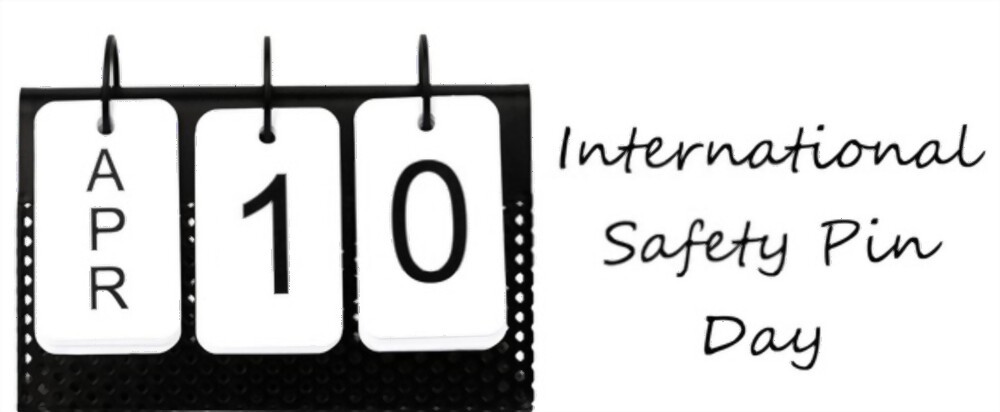Safety pins may seem like a small, unremarkable item that we take for granted in our everyday lives, but their history and versatility are fascinating. On April 10th, we celebrate International Safety Pin Day, a day to honor the humble safety pin and its contributions to fashion, art, and society. In this article, we will delve into the origins of the safety pin, its many uses, and how it has evolved over time.
History of the Safety Pin: From Functional to Fashionable
Early Beginnings
The safety pin’s origins can be traced back to ancient Rome, where fibulae, the precursor to safety pins, were used to fasten clothing. The fibulae were made of bronze and were shaped like modern-day safety pins. However, the safety pin as we know it today was invented in 1849 by American mechanic Walter Hunt.
Industrial Revolution and Beyond
During the Industrial Revolution, safety pins were mass-produced and became more affordable and widely available. They were primarily used for practical purposes such as fastening clothing, holding together papers, and temporarily repairing items. However, as time went on, safety pins became a fashion accessory and a symbol of punk culture in the 1970s.
Versatility of the Safety Pin: More Than Just a Fastener
Fashion
Safety pins have become a staple in fashion, used to create unique, edgy looks on the runway and on the streets. They can be used to fasten clothing, create patterns on fabric, and add a touch of punk flair to any outfit. Designers like Alexander McQueen and Vivienne Westwood have incorporated safety pins into their collections, cementing their place in fashion history.
Art
Artists have also found creative ways to incorporate safety pins into their work. From sculpture to mixed media pieces, safety pins have been used as a medium to express ideas and emotions. Some artists have even used safety pins to create intricate, detailed portraits.
Medical and Emergency Uses
Safety pins are also used in medical and emergency situations. They can be used to secure bandages and dressings, create makeshift splints, and even remove splinters. In emergency situations, safety pins can be used to signal for help or mark a trail.
Celebrating International Safety Pin Day
International Safety Pin Day is a day to celebrate the history and versatility of the safety pin. It is a day to recognize the important role that safety pins have played in fashion, art, and society. On this day, people around the world wear safety pins as a symbol of solidarity and support for marginalized communities.
FAQs
Why is International Safety Pin Day celebrated on April 10th?
International Safety Pin Day is celebrated on April 10th in honor of the day that Walter Hunt received his patent for the safety pin in 1849.
What was the original purpose of the safety pin?
The safety pin was originally invented as a practical solution for fastening clothing and holding papers together.
Who popularized the safety pin as a fashion accessory?
The safety pin became a fashion accessory and symbol of punk culture in the 1970s.
Can safety pins be used for medical purposes?
Yes, safety pins can be used in medical and emergency situations to secure bandages and dressings, create makeshift splints, and even remove splinters.
How can I participate in International Safety Pin Day?
You can participate in International Safety Pin Day by wearing a safety pin as a symbol of support for marginalized communities and sharing information about the history and versatility of the safety pin on social media. You can also use this day as an opportunity to get creative with your fashion and art, incorporating safety pins into your outfits and artwork.
Conclusion
The safety pin may seem like a small, insignificant item, but its impact on fashion, art, and society is undeniable. From its humble beginnings as a functional fastener to its role as a fashion statement and emergency tool, the safety pin has proved its versatility time and time again. So next time you reach for a safety pin, remember its rich history and all the ways it has contributed to our world.

